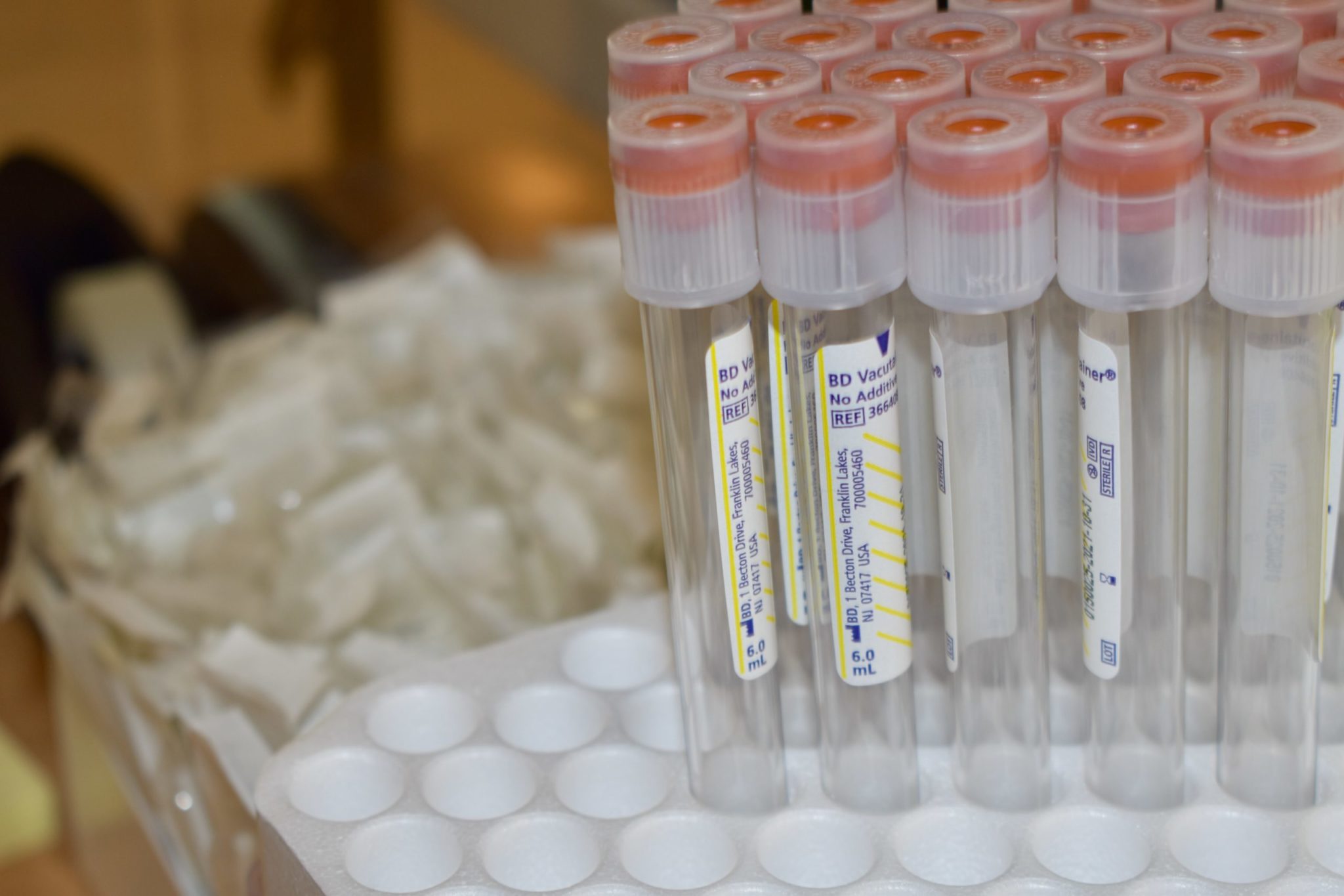Saliva viral load can predict COVID-19 severity, Yale study finds
A recent Yale study has found that the viral load from a saliva test is a better predictor of COVID-19 severity than the load from a nasopharyngeal test.

Regina Sung, Contributing Photographer
A recent study by Yale’s Iwasaki Lab has found that the viral load from saliva tests might be able to predict the severity of COVID-19 cases.
The study, published in January, examined saliva and nasopharyngeal viral loads and their ability to predict COVID-19 outcomes over time. The researchers ended up finding that greater levels of saliva viral load were associated with increasing levels of disease severity. Overall, the saliva viral load was found to be a superior predictor of mortality over time when compared with the nasopharyngeal viral load.
“We found that patients who ultimately died from COVID had a high saliva viral load throughout the course of illness,” Julio Silva, a researcher in the Iwasaki Lab and the lead author on the study, said. “Patients who survived were able to successfully bring down their viral loads.”
According to Silva, the two most common tests that have been used throughout the pandemic for detecting COVID-19 are the nasopharyngeal and saliva tests. The saliva test has a few obvious advantages over the nasopharyngeal tests, which requires swapping the back of the nose and throat, Silva explained. The saliva test can be done without the assistance of a healthcare practitioner and is a much more comfortable experience.
Anne Wyllie, a research scientist in epidemiology and an author on the study, explained that the whole biorepository encountered many challenges with the nasopharyngeal swabs for COVID-19 early on in the pandemic. The swabs quickly fell in short supply, and healthcare workers were hesitant to take additional swabs due if they were unsure if they were necessary.
By comparing the tests, Wyllie and her team found that the saliva tests were more reliable for detecting COVID-19 than the nasopharyngeal tests, she explained. She added that this may be because there is no way to tell how effectively a nasopharyngeal swab has been taken, whereas the saliva itself provides a visible measure of efficacy.
“One of our observations was that we got less variable sampling across saliva as compared to the nasopharyngeal swabs,” Wyllie said.
The researchers set out to compare the viral loads between the two tests at particular times during the course of infection in order to explore whether one test’s viral load was a more reliable measure of patient outcomes.
According to Silva, the group gathered a cohort of individuals, some of whom were infected with COVID-19. The infected patients were grouped into different levels of disease severity, and their saliva viral loads and nasopharyngeal viral loads were compared.
“The saliva viral load correlated with the amount of risk factors that an individual had,” Silva said. “What was interesting is that the more risk factors that an individual had, the higher their viral load was and the more likely they were in our study to either have severe disease or die from illness.”
According to Akiko Iwasaki, a professor of immunology at Yale and the senior author on the study, the disease is caused by the replication of the virus that is channeled into the oral cavity, which allows it to be detected via saliva tests. More specifically, the virus replicates in the oral cavity or lower respiratory tract, rather than virus replicating in the nasopharynx.
Iwasaki explained that Silva realized that saliva, not nasopharyngeal, viral load correlates better with COVID-19 disease severity and mortality.
“The study found that saliva viral load is a much better correlate and a unifying factor that predicts disease severity and mortality from COVID,” Iwasaki wrote in an email to the News. “Saliva viral load basically tracks beautifully with age, comorbidity, sex, hospitalization, inflammatory factors … etc. It revealed not only the utility of saliva viral load but also suggests the underlying mechanism of COVID.”
Silva hopes these findings will be replicated by other studies, and that the saliva viral load will be used clinically in the future to help patients with COVID-19.
Silva explained he is now looking to find if there is a direct association between the depletion of white blood cells and T cells and the saliva viral load. The research team at the Iwasaki Lab as a whole will also investigate different sources of the virus and their effects on patient outcomes.
“We would love to understand what exact source of virus is leading to severe and lethal COVID,” Iwasaki wrote. “It is connected to the saliva but we do not know where and how such virus leads to disease.”
The saliva test developed at Yale, called SalivaDirect, was given Emergency Use Authorization by the Food and Drug Administration in August of last year.
Kaitlin Flores | kaitlin.flores@yale.edu








